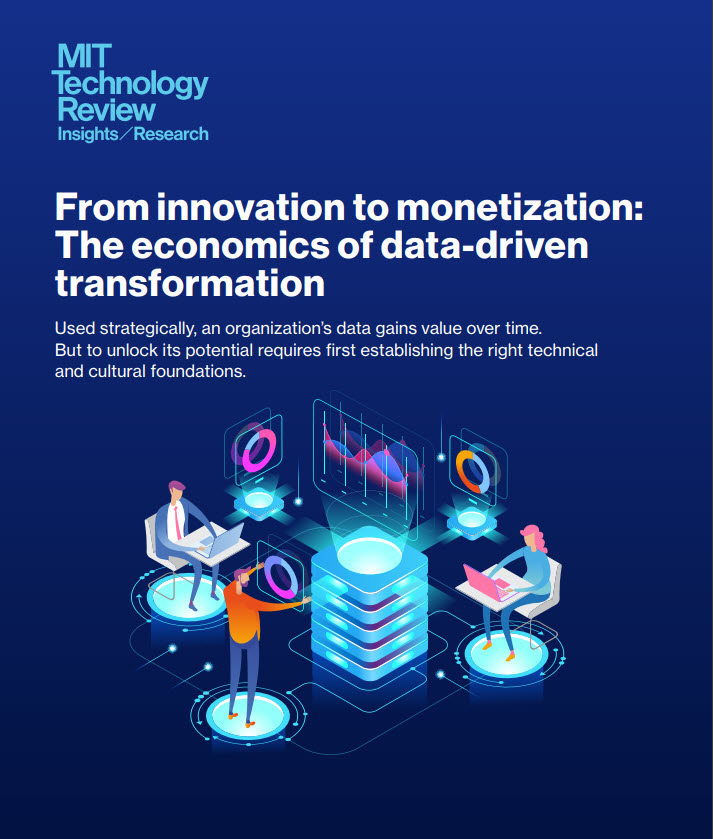Sponsored
From innovation to monetization: The economics of data-driven transformation

In association withHitachi Vantara
Across industries, for companies large and small, vast new data streams are now the guiding force behind new revenue opportunities and the catalyst for dramatic operational makeovers. In a Midwestern field, for example, a moisture and soil temperature sensor network helps farmers reap data-driven insights that drive better decisions on everything from seed selection to crop yield. In a congested city, a transportation provider taps telematics data and predictive analytics to assess and remap routes, saving millions of gallons of fuel, cutting hundreds of metric tons of carbon dioxide emissions, and shaving off hundreds of millions of dollars in costs.
From innovation to monetization: The economics of data-driven transformation
While there’s no question that big data is the key to business success in the analytics-driven future, the sheer volume of data collected is not the defining competitive differentiator— rather, it’s what companies do with that data that determines whether they win or lose.
To capitalize on the promise of data-driven innovation—whether the goal is increasing productivity or monetizing new products and services—companies first need to build the proper foundation, which includes establishing processes and policies for gathering, cleansing, organizing, and accessing their data.
To ensure that organizations harvest the most value from their data, the processes must be adaptable to changing needs and able to create a data pipeline that places a premium on analytics.
To download the full executive brief click here.
Keep Reading
Most Popular
Large language models can do jaw-dropping things. But nobody knows exactly why.
And that's a problem. Figuring it out is one of the biggest scientific puzzles of our time and a crucial step towards controlling more powerful future models.
The problem with plug-in hybrids? Their drivers.
Plug-in hybrids are often sold as a transition to EVs, but new data from Europe shows we’re still underestimating the emissions they produce.
Google DeepMind’s new generative model makes Super Mario–like games from scratch
Genie learns how to control games by watching hours and hours of video. It could help train next-gen robots too.
How scientists traced a mysterious covid case back to six toilets
When wastewater surveillance turns into a hunt for a single infected individual, the ethics get tricky.
Stay connected
Get the latest updates from
MIT Technology Review
Discover special offers, top stories, upcoming events, and more.